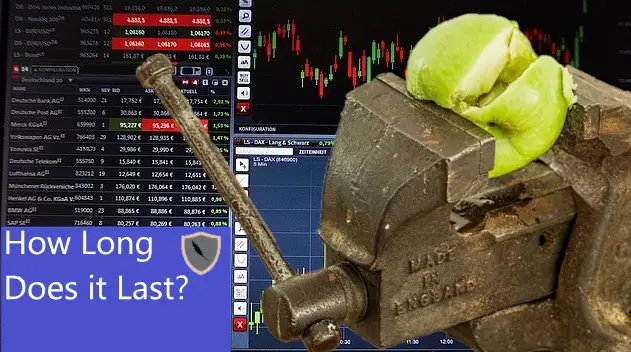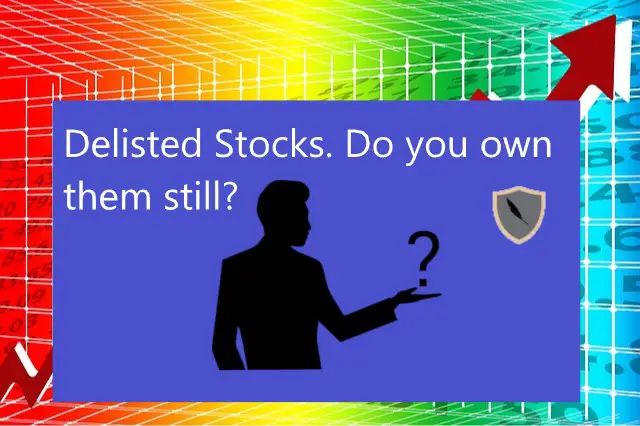In the current market we are seeing an explosion in high P/E stocks. This indicates that investors are willing to spend more money on a stock because they think it will continue to grow in the long term. However that does not answer the question of which is better growth or value investing. The answer might surprise you and help you generate some additional capital at the end of the year.
Both growth and value investing serve different purposes in a portfolio. If you are going just for the most return in the shortest time frame then growth investing is a better approach, however when you factor in total risk in a position across the entire portfolio suddenly value investing becomes a better option.
The quick answer then is this: If you are an investor who knows how to hedge properly then growth investing is a better approach for a 5-15 year timeframe in the current market. However in periods of market crashes value investing takes the lead.
In this article I will define what growth and value investing is, their drawbacks, how you can hedge their positions in your portfolio, and finally present a summary on which is better.
Here at Chronohistoria I teach people how to generate above average market returns (alpha). I routinely publish articles on investment research, methodologies, and tips/tricks so that you can up that yearly ROI. Feel free to sign up for the free newsletter to remain up to date on everything investing!
Let’s dive into the article on growth vs. value investing so that I can show you how to generate from each.
Growth Investing
In this section I outline everything you need to know about growth investing. I go over the definition, past performance, current performance, expected future performance, its drawbacks, and how to hedge against growth positions in your portfolio.
Definition of Growth Investing
Growth based investing can simply be explained as looking for potential investments that are expected to rapidly grow in the future. Growth based investing in the stock market would resemble buying and holding stocks in companies that exhibit high P/E ratios and routinely beat market expectations on revenue, sales, and lowered liability. (source)
Simply put, an investor who focuses on growth based investing will be ‘betting on the future’ of a stock instead of the current financial situation. This type of investor instead of reading financial reports looks at future sector analysis along with how the company will position itself in 5-15 years.
This type of analysis has the investors looking at products/services, executive leadership, competitors, and finally expected governmental oversight (congressional report on EV cars for underserved communities for example).
Typically growth based companies have a very high P/E number and a low price to book number. This combination means that investors are willing to pay a super high premium for the stocks as they expect to see larger than normal returns from them.
An example of a growth based company would be Tesla. Investors are willing to pay a premium because they are bullish on the future of the company in 5-15 years. As such the price of the company increases with each purchase of the stock, which overtime increases the price to earnings ratio (P/E).
Past Performance In Growth Investing
The general consensus is that growth investing before the dot com bubble (late 90’s) was a bad style of investing. The total returns year over year were dwarfed by the value investing approach.
The reason that value investing was better before the 90’s was because of accounting principles being more streamlined and the lack of retail traders. Simply put when only major wealth firms had access to the market it was easier to predict swings in the pricing models of companies. (Source)
As more and more retail investors entered the market then speculation began to dominate investing methodologies. This resulted in the explosion of internet companies in the 90’s who had extremely low overhead but returned massive revenue. At the same time more and more retail investors were getting into the market and betting that the future growth of these companies would continue to increase.
This came to a standstill during the dotcom bubble in the late 90’s. For a very brief time period value investing started to return more than growth investing. However as the market recovered growth investing started to take off again until the present day.
Present Performance In Growth Investing
Currently speculation and growth investing run the market. This is evident by the large U.S ETF SPY which has a past 5 year gain of around 15% per year. This is huge when you consider that the average mean gain of the U.S market is around 9.25% per year.
Simply put, growth investing is dominating the markets currently. That means that investors care more about speculation and expected future profits than they do actual finances.
This is both a bad thing and a good thing. Bad because everything is overvalued. Good because if you know what you’re doing you can make a ton of money. Currently an investment in the SPY is expected to generate you around 15% per year. That is huge when you factor in the power of compounding returns.
However this does not factor in total risk in a portfolio using growth investing. If the average investor knew their total risk there would be mass panic. If you’re interested there is a good article on total risk in growth portfolios written by Stephen Brown in the Financial Analysts Journal. (Source)
Expected Future Performance In Growth Investing
For the foreseeable future growth based investing will continue to dominate total returns. This is because every year the total amount of retail investors in the market increases while institutional firms begin to decrease.
Retail investors do not care about risk and chase the highest potential rewards possible. As such companies have to advertise to this changing dynamic to sell their stock. Companies such as Robinhood have dominated this sphere by offering easy to use investing mediums to the everyday investor.
What this translates to is that more and more people are starting to invest their money in speculative companies with ever increasing P/E. This in turn pushes the stock price of a growth focused company up.
Some firms have even learned how to manipulate retail investor sentiment to sell their stock to an artificial pump. TSLA is one company that comes to mind. The CEO, Musk, will release a press conference and sell shares into a pump. (Source)
Drawbacks of Growth Investing
There are two main drawbacks to growth focused investing. First, is that you are reliant upon investor sentiment to continue to be bullish on a stock. Second, your total risk in growth investing is substantially higher than value investing.
First, investor sentiment. What propels growth investing is investor sentiment. That is the whole point. If enough retail investors think that Apple’s stock is worth $2,000 then it will eventually grow to $2,000. The goal here is to sell when investor sentiment starts to run out or change.
Second, growth investing has a silent killer…Risk. Since the P/E is so high on growth based stocks then when there is a correction it is drastic. We saw this in the dotcom bubble when the stock market dropped nearly 75% over two years. (Source)
Its risk is the main drawback of growth investing. Without a proper hedge put in place you will destroy your portfolio on a drawback. For a lot of investors they don’t have the time or patience to wait for the market to return back to its previous highs.
So let’s discuss how you can mitigate this risk with a hedge.
How To Hedge Growth Investing Positions
“We must tend to our garden.” Here the garden is our portfolio, and we must put stops in place that will protect it in case of a downfall. This is the concept of hedging a portfolio.
For growth based investing, hedging is vital. A majority of retail investors fail to hedge properly or even understand the concept.
While there are many ways to properly hedge a portfolio the most common is to inverse the currency of the economy you are investing in. For U.S investors this means simply to hold a percentage in gold.
The reason that gold is a hedge on the U.S market is because as the market falls the dollar will go with it. The U.S dollar is no longer based on the value of gold, and thus as the dollar falls other currencies of the world will rise. These currencies are based on the gold standard, and as such the price of gold will rise.
In the above graph we can see a demonstration of how the hedge would work. Investment 1 is your portfolio (U.S) and investment 2 would be gold. As the first investment fails then the price of gold will rise. The goal of the hedge position is to keep your portfolio in the market even when it is failing.
There are many ways to hedge a portfolio. I wrote up an entire article on the practice that you can find here. (Click here for article on 3 ways to easily hedge)
Value Investing
In this section I outline everything you need to know about value investing. I go over the definition, past performance, current performance, expected future performance, its drawback, and how to hedge against value positions in your portfolio.
Definition of Value Investing
The simple definition of value investing is this: Value investing is simply finding stocks that are trading less for their intrinsic/book value and going long. The idea is that you find golden nuggets of companies who are worth more than the market is accurately pricing them as and you simply buy them and hold until the market prices them correctly. (Source)
Simply put, a value investor will spend hundreds of hours going through financial reports to and calculating the total value of the company. You can think of this as adding up everything the company owns, its liabilities, assets, cash, and capital. That is the company’s book value. If the book value of a company is more than what the market is pricing the company’s stock for then logic would dictate that the company’s stock price would rise.
That is value investing. You are investing not in the future potential of the company but rather the inherent present value of the company in the then and now. The idea is that overtime the markets will start to realize the mistake in pricing and eventually correct the price accordingly. Which you as a value investor will then make profit.
Now that’s not saying that value investors don’t speculate on the long term growth potential of the company like growth investors would. The value investor simply just buys and sells based on the intrinsic value vs. market value of the company.
Value investing revolves around one central theory. The theory of efficient markets. That the market overtime will correctly price assets as more investors buy and sell based on more accurate data. (source)
Past Performance Of Value Investing
From 1976 up until 1996 value investing long/short portfolios that only invested based on financial reports returned around 23% annually. (Source)
Granted that would be if your investing strategy was perfect and no outside clients impacted the portfolio. You simply picked stocks and invested based off the intrinsic value of the company.
For many people value investing as a methodology started with Benjamin Graham with his book The Intelligent Investor in 1949. In this book Graham outlines how investors can beat the market by simply picking wrongly valued stocks on the market and waiting for a correction. He was right! (Source)
However the underlying thesis of value investing as a methodology is that you need to find price errors in the market and wait for a correction. Before computers automatically priced everything this was true, you could hire a fleet of analysts to perform DCF’s to predict price movements over time.
Nowadays however computers have largely misplaced accounting firms. Now as soon as a financial report hits the market the stock’s price will adjust accordingly.
Present Performance of Value Investing
From 1990 up through 2020 value investing has failed investors. Computers have completely removed the nuggets of gold that analysts would scour the market looking for. Or at least in theory that’s the case.
In actuality value investing simply moved from large caps down to the mid and small cap world. Value investing still dominates in mid caps which is why all major hedge funds have started to move their analysts to find mispriced assets in the mid cap sector.
The reason behind this is simple. The larger companies such as Google, Microsoft, Amazon, and Facebook have an army of computer algorithms auto-pricing everything. A computer can automatically predict a stock price based on a financial report, which makes the market extremely efficient. (Source)
As we begin to move further down into more obscure companies that large firms don’t waste their time on we can use the value investing methodology. The realm of small caps and mid caps is still open to value investors who can accurately predict price movements. Portfolios in this stock cap range can expect to see returns in the range of 12-20% annually while being self hedged. (source)
Expected Future Performance of Value Investing
Currently value investing as a bleak future. As more and more retail investors begin to pour into the market and drive up P/E across the board, value investing gets harder. This trend has been commented upon by several academics within the industry. (Example)
Over the next decade value investing is slated to continue to downtrend in total returns when compared to growth investing. This however does not paint the entire picture. Value investing is hands down better in one category when compared to growth investing, and that is risk management.
During periods of economic downturn such as the dotcom bubble, 2008 crisis, and 2020 pandemic value investing sees higher returns in the short term and overall better managed risk. This is because a value investor is purchasing an asset based around the intrinsic value of the company.
As a company becomes more profitable then that intrinsic value raises. This provides a safety net for the value investor as they know the absolute minimum their stock will be worth.
As such, the future expected performance of value investing is not going to be in generating alpha (above market returns) but rather in risk management.
Drawback Of Value Investing
Value investing has its drawbacks. The largest one is the lack of return when compared to the sister methodology of growth investing.
Simply put if you are a growth focused investor who wants to grow their portfolio in the fastest way value investing is not for you. However, over time we can see how value investing is a better option for investors than growth based investing. That is because as the intrinsic value of a company increases so will the value investors portfolio while also lowering total risk.
How To Hedge Against Value Investing
Generally speaking value investing in itself provides its own hedge. As a value investor you typically wont open a position that has a high degree of risk because you are trying to gauge the book/intrinsic value of a stock.
However every position should have a hedge associated with it. The best hedges to take against value investing positions are either going to be competitors, options, or currency inversion hedges.
Either of these are going to allow you to inverse your value invested position directly. The easiest one to take is going to be an option hedge but since they decay in value I recommend looking elsewhere. Typically the best hedge to take is going to be to take a position in a competitor.
Summary: Which Is Better, Value or Growth?
The answer is pretty simple. If you’re an average investor who can hedge their own positions then growth investing is better for smaller time frames. However once a market crash happens you can lose almost your entire portfolio, which is why learning to hedge is so important.
If you’re a longer time frame investor who can perform valuation analysis on mid and small cap companies then value investing is better for longer time frames (15+years). This is because during market recessions your investment should perform much better than growth investing.
Conclusion
There you have it: an article that completely goes over which is better. Growth or value investing. The trick is to learn how to position a trade so that your downside is protected (hedging).
That’s where this website comes in. I teach people how to generate above normal market returns (alpha). I routinely publish articles that go over market research, investment methodologies, and tips/tricks of the trade so that you can be better prepared.
Feel free to sign up for the free newsletter to remain up to date.
Further, you can check out some of the other articles below.
-
How Long Does a Short Squeeze Last? (3 Answers)

What is the time frame for you short squeeze? Well here is everything you will ever need to know to determine how long it will last.
-
Why You Still Own a Stock After It’s Delisted and How to Sell It

Do you still own a stock after its delisted? How do you sell it? Don’t worry the stock is still worth money and here is how to sell.
-
Can You Make 1% A Day in the Stock Market? (3 Steps)

Making 1% a day in the stock market is hard but defiantly doable. Here are 3 simple steps to helping you achieve this return.
Until next time, I wish you the best of luck in your investing journey.
Sincerely,



